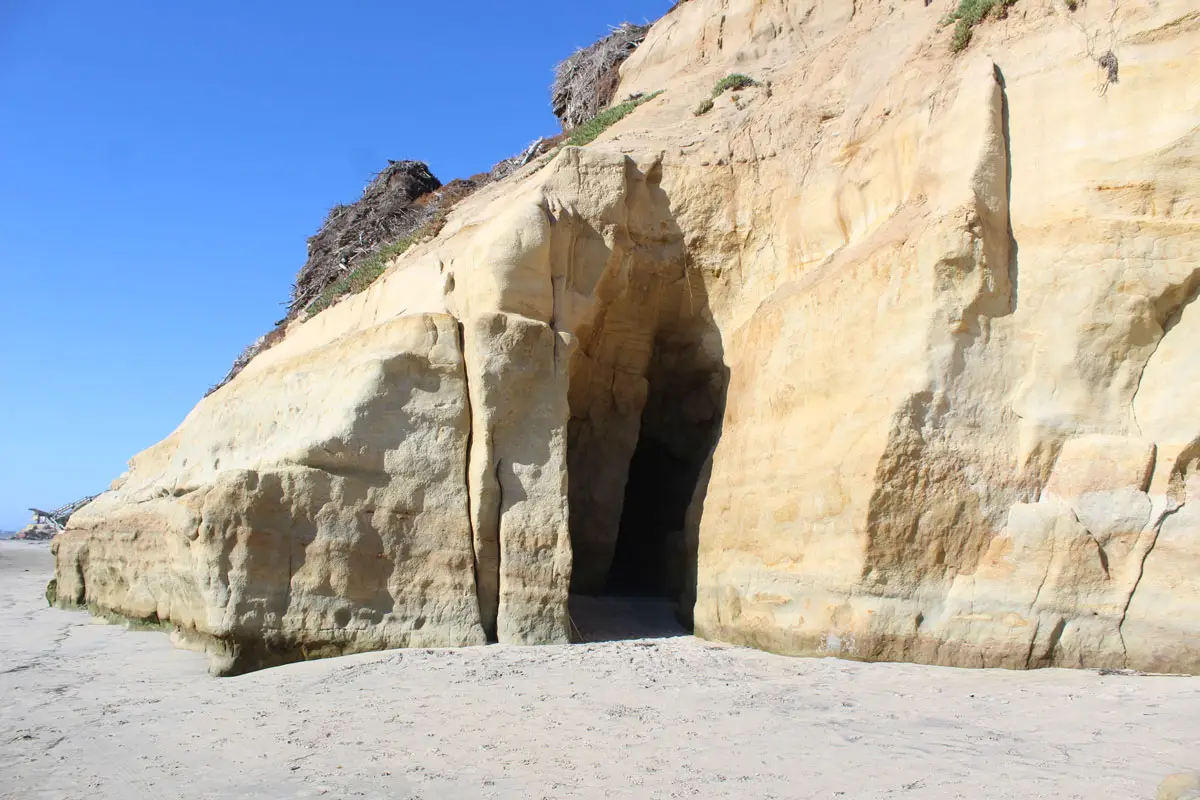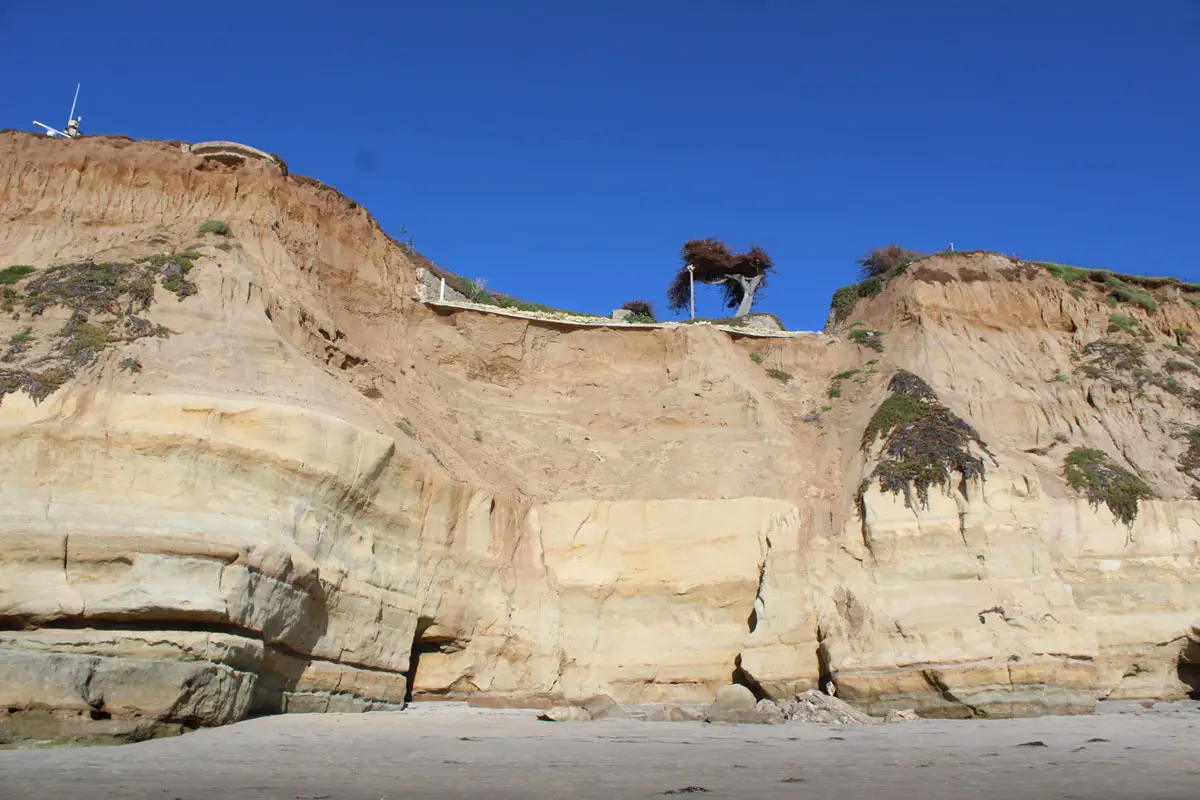DEL MAR — A new geotechnical report is increasing scrutiny about the safety of building the proposed Seaside Ridge housing development on Del Mar’s north bluff as the developer and city officials continue to butt heads over the project.
Planned for a 7-acre property just north of Del Mar Dog Beach, the Seaside Ridge project includes 259 units for various income levels spread between nine buildings and a walking trail to the west side of the property.
Seaside Ridge is the latest project proposed for the site, owned by philanthropist Carol Lazier, following the failed Marisol resort development that residents rejected in a 2020 ballot measure.
Bluff stability is a chief concern among residents and scientists regarding the project. Seaside Ridge developers obtained a geotechnical report from firm Geocon Inc. in March, advising that the project can safely proceed with “ample” structural setbacks from the top of the bluff.

Earlier this year, residents with the group Friends of the Del Mar Bluffs, which has been openly opposed to the project, personally contributed $15,000 for a separate geotechnical engineering firm to review Seaside Ridge plans and provide information on bluff conditions at the site.
In a report shared with Del Mar officials last week, San Marcos-based Evans, Colbaugh and Associates Inc., or ECA, said numerous factors could lead to bluff failure, which project plans should consider.
ECA clarified that the document is not a third-party review impacting whether the project is approved or denied but presents the firm’s “opinions of perceived geotechnical engineering shortfalls” using their expertise and existing research on the North Bluff, including from acclaimed Scripps Oceanography researcher Adam Young.
Stability concerns
The Geocon report completed as part of the Seaside Ridge application establishes a 60-foot minimum setback line from the bluff’s edge. This was calculated based on projected bluff retreat and the factor of safety standard for landslides, with 17 additional feet added as a buffer for a planned walking path.
Among their conclusions, however, ECA recommended moving the setback lines at least 20 feet further inland on the bluff due to the presence of sea caves burrowing as far as approximately 30 feet into the bluff.
Because of the potential instability created by these caves, ECA recommended that any bluff retreat projections be measured from the back of the sea caves rather than the visible edge of the bluff.
“The geotechnical consultant of record for this project should project all of the sea caves (and other bedrock anomalies) …. over the life of the development (i.e. next 75 years) and reanalyze the long term bluff stability taking these voids into consideration,” ECA said.
Seaside Ridge spokesperson Darren Pudgil said project plans and the calculated setback are based on California Coastal Commission guidelines, which do not specify this language regarding sea caves.
Pudgil also emphasized the limited scope of the ECA report, which did not include stability analysis and did not review the March geotechnical study from Geocon.

“We, on the other hand, have studied the North Bluff extensively and can say confidently that Seaside Ridge, as designed, adheres to the development codes and coastal development guidelines and does not pose a threat to the public or its residents,” Pudgil said. “The design sufficiently accounts for up to seven feet of sea level rise, historic and projected bluff erosion, and the sea caves present on the property.”
ECA also advised moving the walking path proposed for the western edge of the project at least 40 feet east, as any grading for this path could eliminate a natural cemented “cap” currently providing temporary stability to the bluff top.
Further, mass grading of the site as a whole — even further inland on the site — could accelerate or increase bluff retreat, according to the report, ECA said.
Seaside Ridge spokesperson Darren Pudgil said there will be minimal to no grading for the path and called this recommendation “unsupported by geotechnical science.”
“The re-configuration of the property surface topography post-development would actually reduce runoff flow over the top of slope and result in less ‘subaerial erosion’ and bluff retreat resulting in a lower erosion rate,” Pudgil said.
Other risk factors identified by ECA include the over-steepened sections of the upper portion of the bluff, which the firm said should not currently be standing and will likely fail and flatten to the angle of repose.
“It is these failures that are of the biggest concern when dealing with proximity to the tops of the bluff for structures, pedestrian traffic, etc,” the report said.
Del Mar City Manager Ashley Jones confirmed receipt of the ECA report but said the extent to which the information will be relied upon won’t be determined until the project application is complete and the environmental review process begins.
“The City is appreciative of the concerns expressed by the Friends of the Del Mar Bluffs and the voluntary contribution of the geotechnical report they commissioned,” Jones said.
Back and forth with the city
On the legal side, attorneys for Seaside Ridge are continuing their back-and-forth with the city about whether the project can move forward.
Del Mar officials have twice deemed the project application incomplete, first in late April and again in late June.
Attorney Whitney Hodges of Sheppard Mullin, representing Seaside Ridge, most recently responded to the city’s noted deficiencies on Aug. 25.

Seaside Ridge lawyers have insisted the project application must be approved administratively, free of discretionary city standards, under a new state law called Builder’s Remedy.
The largely untested law requires cities without a compliant Housing Element to administratively approve projects that offer affordable housing units in certain situations. While Del Mar’s 6th Cycle Housing Element was deemed compliant in May, Seaside Ridge argues that the law applies because they submitted their application last October before the city earned compliance.
City officials have repeatedly rejected this argument, contending that the Builder’s Remedy only applies when a developer has submitted a complete application.
Del Mar’s housing element has identified the Lazier property as a potential site to develop required housing if they cannot reach an affordable housing agreement with the Del Mar Fairgrounds to construct on their land by next spring.
Fairgrounds officials said that a draft agreement will likely be ready for review by the end of this year or early 2024.
Despite this, Seaside Ridge representatives insist that the city rezone the Lazier property to allow the project to progress. City officials say the developer must submit a rezoning application to start this process.
City officials are currently reviewing the third submitted application for the project.



